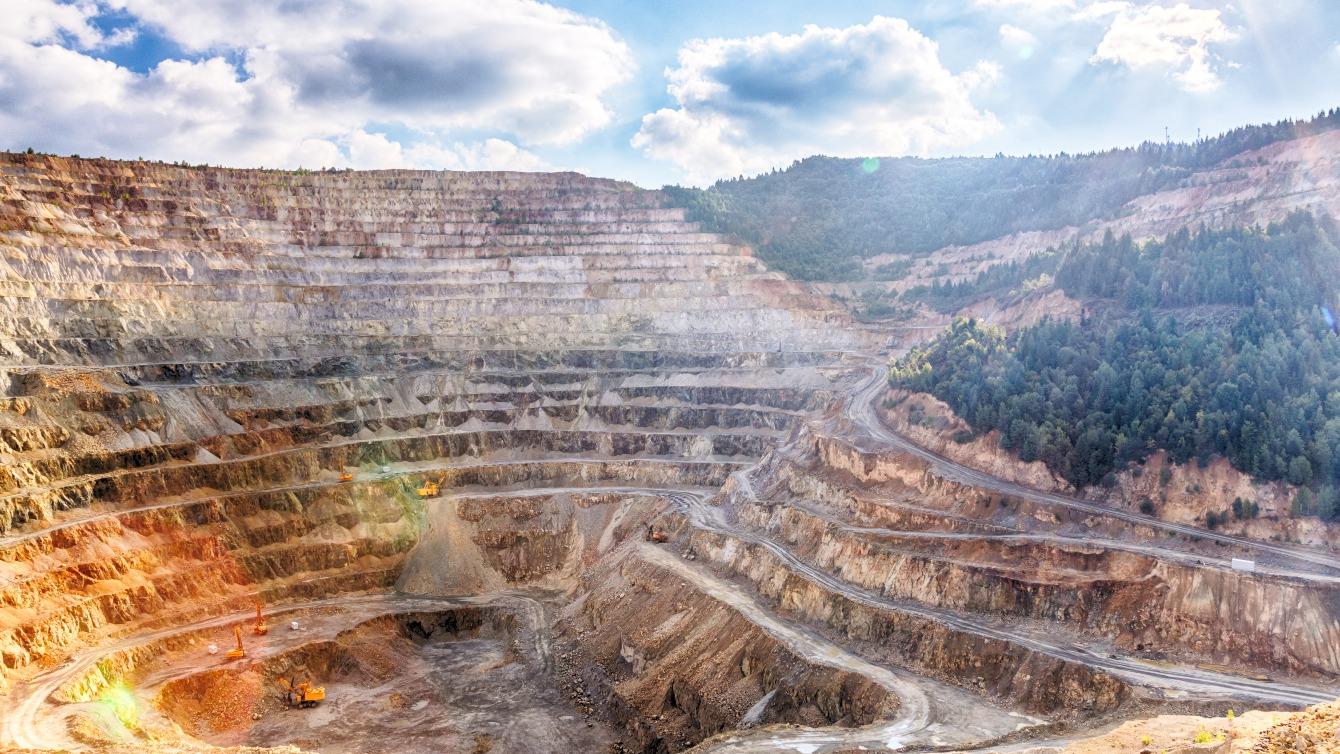
In brief
The second Consultation Paper by the Australian Carbon Leakage Review offers an important insight into how Australia may respond to the risk of carbon leakage. Carbon leakage refers broadly to the relocation of an enterprise out of a jurisdiction, primarily due to the imposition of a domestic carbon tax (or other form of price signal). An import-based Border Carbon Adjustment (BCA) (as recommended in the Consultation Paper) could equalise the level of carbon tax paid by international producers with those paid by domestic producers.
The Consultation Paper indicates that clinker, concrete and lime products would be the first commodities subject to a BCA, followed by steel, glass and ammonia-based products at a future date. Importantly, this Consultation Paper does not reflect an adopted Government position, but rather the recommended policy setting by the Review.
The Consultation Paper is open for submissions until 5pm AEDT Tuesday 3 December 2024.
In detail
The Carbon Leakage Review
The Carbon Leakage Review is an initiative undertaken by the Australian Department of Climate Change, Energy, the Environment and Water (DCCEEW). The Review aims to assess the risk of carbon leakage in Australia (mainly resulting from the application of the Australian Safeguard Mechanism) and explores the potential policy options to address these risks, including the feasibility of implementing a BCA mechanism for industries covered by the Australian Safeguard Mechanism, such as steel, ammonia and cement.
An initial Consultation Paper was released for comment in November 2023, attracting 77 submissions in response. Since then, DCCEEW has undertaken further economic and policy analysis, as well as targeted stakeholder engagement to assess and address feedback received. Consultation Paper 2 (the Consultation Paper), while not endorsed as government policy, provides a more refined insight into the Review’s recommended policy settings, which may potentially be adopted in the near term.
The final recommendations of the Review are expected to be presented to the government by the end of 2024, following further stakeholder input and analysis.
Preliminary findings of the second Consultation Paper
Assessment of leakage under existing polices for key sectors
DCCEEW analysed both the import and export carbon leakage risk for the 73 listed trade-exposed commodities, the findings of which are detailed below, noting we have extracted the key commodities for quick reference.
| Possible first movers for a Border Carbon Adjustment | Possible later additions for Border Carbon Adjustment | Unlikely to be included in an initial Border Carbon Adjustment | Border Carbon Adjustment unlikely to be applied |
|---|---|---|---|
| (Where a high risk of carbon leakage exists) | (Where a material to high risk of carbon leakage exists, or where there is expected to be implementation challenges) | (Where a mixed risk of carbon leakage exists) | (Where a limited risk of carbon leakage exists) |
|
|
|
All other commodities, including:
|
Source: Pages 40-41 of the Consultation Paper

Border Carbon Adjustment
An import BCA is designed to address carbon leakage by imposing a carbon tax on imported goods equivalent to the carbon taxes faced by domestic producers of the same products. The intention is to equalise the carbon tax burden between domestic producers and producers in countries with a lower (or no) equivalent carbon tax.
The Consultation Paper’s preliminary findings confirm the view that a BCA could be a feasible solution for sectors with material carbon leakage risk. If adopted by the Australian government, the implementation likely would be staged, starting with ‘simpler’ commodities at higher risk of carbon leakage (i.e. clinker, cement and lime) and then progressing to other more complex commodities with material carbon leakage risk. For commodities with a limited risk of carbon leakage, the Consultation Paper suggests no BCA, with a re-evaluation recommended as part of the next Safeguard Mechanism Review in 2026-27.
Export BCAs, which seek to improve competitiveness of exporters by reversing or crediting the domestic carbon pricing burden, has been ruled out in the Consultation Paper.
Border Carbon Adjustment – Design considerations
The Preliminary Findings of the Consultation Paper emphasise the need for any BCA to be compliant with international trade principles. As such, the potential BCA must apply on the same terms as the Australian Safeguard Mechanism. The Preliminary Findings recommend that the BCA should therefore apply to only Scope 1 (direct) emissions and all relevant greenhouse gases and should only apply to price emissions which exceed the permitted domestic baseline for that industry.
The Preliminary Findings also indicate that further consideration is needed where the Safeguard Mechanism does not currently apply to 100% of the emissions from an industry (i.e. where there are production facilities domestically which fall below the Safeguard Mechanism’s current entry threshold, such is the case for lime production). It may be that the Safeguard Mechanism is expanded to cover 100% of emissions from a particular industry to remove this complexity, but the Consultation Paper is silent on this.
Interaction with Safeguard Mechanism
The Safeguard Mechanism is Australia’s primary policy for reducing industrial emissions and currently applies to approximately 220 of Australia’s largest industrial facilities, covering 37 commodity groups.
The Safeguard Mechanism sets an annual emissions limit (referred to as a “baseline”) for each facility, which will be reduced at a pre-determined linear decline rate (of 4.9%) to reach Australia’s emission reduction targets. Any annual emissions above the set baseline are subject to a carbon price signal, where either an Australian Carbon Credit Unit (ACCU) or a Safeguard Mechanism Credit Unit (SMC) must be surrendered for each tonne of emissions above the permitted baseline. ACCUs and SMCs can be purchased from other facilities / holders, from the Government (in the case of ACCUs) or can be generated.
As a concessionary measure under the Safeguard Mechanism, facilities which are ‘trade exposed’, broadly meaning subject to price sensitivity and competition with foreign producers, can apply to be categorised as Trade Exposed Baseline Adjusted (TEBA) facilities. TEBA facilities are eligible for a significantly reduced baseline decline rate, in effect exempting them (in part or in full) from the price signal of the Safeguard Mechanism.
Highly relevant for TEBA facilities, the Consultation Paper’s preliminary findings indicate that the policy justification for the TEBA concessions (primarily being the reduced decline rate) will no longer exist where a BCA is enforced. Therefore, if these Preliminary Findings were adopted, and if a BCA were to be enacted, TEBA facilities could reasonably expect to see their Safeguard Mechanism concessions removed, effectively subjecting them to the full price signal of the domestic mechanism.
Whilst it remains to be seen whether the government will continue the TEBA provisions alongside a BCA mechanism. Given the risk of incompatibility with international trade principles, the application of both a BCA and continuing the TEBA concessions is considered unlikely.
Other findings
Product emission standards are a regulatory measure that sets an upper limit on the emissions intensity of products, including imported products, which can be sold into a particular market. The Consultation Paper finds that while product level emission standards can be a legitimate tool to address a range of policy objectives, it is not suitable to mitigate the expected risk of carbon leakage and implementation is therefore not recommended.
The Consultation Paper also includes Preliminary Findings which indicate that public investment is a critical aspect of managing the risks of carbon leakage but will itself be insufficient to address carbon leakage risk.
How might a Border Carbon Adjustment affect importers, domestic producers and downstream customers if enacted in accordance with the Preliminary Findings of the Review?
| Importers | Australian producers | Downstream consumers | |
|---|---|---|---|
| Cost of carbon | Increased cost of carbon Importers of in-scope products into Australia will face a price signal relative to the carbon intensity of their production process, when compared to the domestic Australian baseline. |
Increased competitiveness in the domestic market A BCA will equalise the carbon price burden imposed by the Safeguard Mechanism on domestic producers. As a result, domestic producers would be on an equal carbon tax competitiveness with importers. |
Increased costs Where a downstream customer relies on imported in-scope products, the price of carbon imposed by a BCA may result in higher costs. However, the carbon cost will only be equalised to the carbon cost already borne by domestic producers of the same product. |
| Administrative burden for Border Carbon Adjustment | Increased compliance burden Importers will bear an increased compliance burden (either directly or through the provision of information) for the new reporting and verification requirements. |
No change Based on the Preliminary Findings there would be no additional reporting burden borne by the Australian producers under a BCA. Any change in the TEBA concessions however may result in additional compliance burdens for relevant Australian facilities. |
No change Based on the Preliminary Findings there would be no additional reporting burden borne by Downstream customers. |
| Safeguard Mechanism | No change The Safeguard Mechanism is not directly applicable to importers. |
Potential change The potential removal of the TEBA concessions may require TEBA facilities to adapt to the accelerated decline rates. |
No change The Safeguard Mechanism is not directly applicable to downstream customers. |
Observations of global carbon tax trend
The European Union’s (EU) Carbon Border Adjustment Mechanism (CBAM) entered into force from late 2023 (for reporting only) and payment obligations will commence from 1 January 2026. The United Kingdom’s (UK) CBAM will subsequently commence on 1 January 2027. The Review has been clear to draw a distinction between the EU/UK CBAMs and the recommended Australian BCA.
Based on the Consultation Paper, the Australian BCA would be significantly smaller in scope when compared to the UK/EU CBAMs. In addition, the EU and UK CBAMs do not apply a ‘baseline permitted emissions’ principle, but rather apply a carbon tax to direct emissions from the production process in full. The UK and EU CBAMs are able to do this, and maintain congruency with international trade principles, as their domestic carbon pricing mechanisms (the EU and UK Emissions Trading Systems’) do not apply a permitted baseline of emissions (or are currently in the process of phasing this permitted baseline out). The elimination of the baseline permitted emissions strengthens the impact of the mechanisms domestically and is likely to substantially reduce the administrative burden of the CBAM calculations.
The takeaway
The Second Consultation Paper recommends that Australia adopt a BCA. Whilst no decisions have yet been made by government, impacted parties can take immediate steps to respond by engaging in the current public consultation process, which is available until 5pm AEDT Tuesday 3 December 2024. Subsequently, impacted parties should consider the following:
Short-term actions
- If you are an overseas importer or domestic producer - take steps to better understand your emissions and competitive profile, so that you can make well informed decisions when responding to these regulatory changes.
- If you are domestic Australian producer - understand how the already legislated EU and UK CBAMs operate, to inform the likely direction of travel for an Australian BCA, noting there may be some key differences. If you are currently under the thresholds of the Safeguard Mechanism, conduct an assessment to determine how your business may be impacted if the threshold changed.
- If you are a downstream customer - conduct a supply chain assessment to gain a better understanding of how an Australian BCA could impact your business.
Long-term actions
- Conduct a strategic assessment of your supply chain to identify carbon emissions and evaluate alternatives for carbon intensive commodities sourced internationally, which could include:
- “Resource shuffling” or substituting imported inputs with those already subject to a carbon price (noting this may only provide short term relief); and
- Making reasonable investments in supply chains development, which prioritise low-carbon or already adequately carbon-priced sources.
- Make investments in supply chain visibility, planning and control, as these may help to pre-empt administrative burdens, mitigate compliance risks and enable effective navigation of the increasingly complex web of obligations globally.
James O'Reilly
Partner, Brisbane Tax Leader & Global Energy, Utilities and Mining Tax Leader, PwC Australia
Paul Cornick
Partner, Global Trade, PwC Australia
Melissa Camilleri
Director, Global Trade, PwC Australia
Mitchell Laizans
Senior Manager, Tax, PwC Australia
Jonathan Banks
Senior Manager, Tax, PwC Australia
















